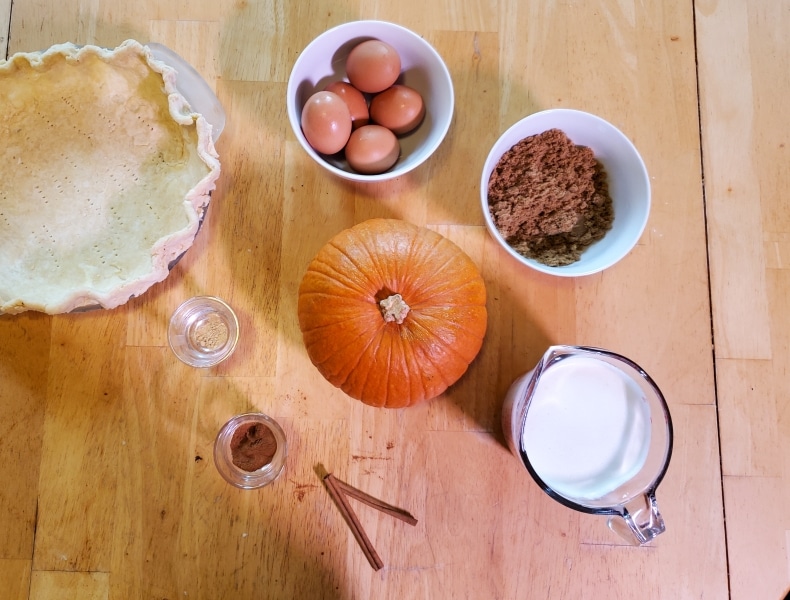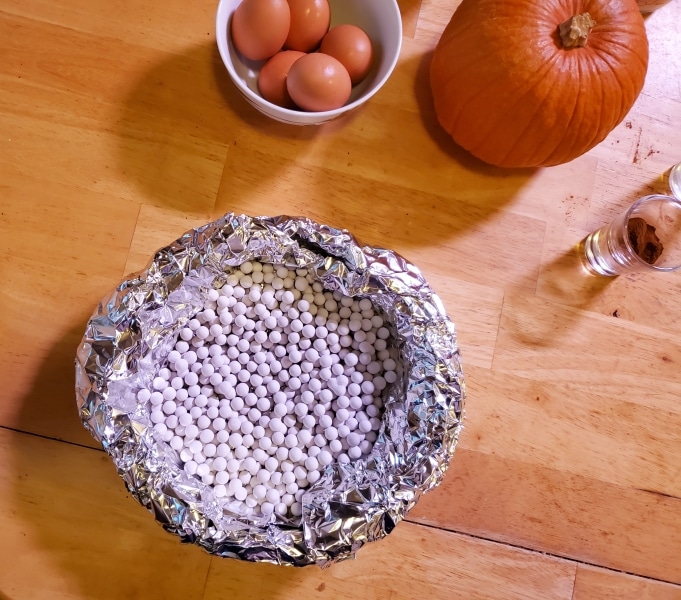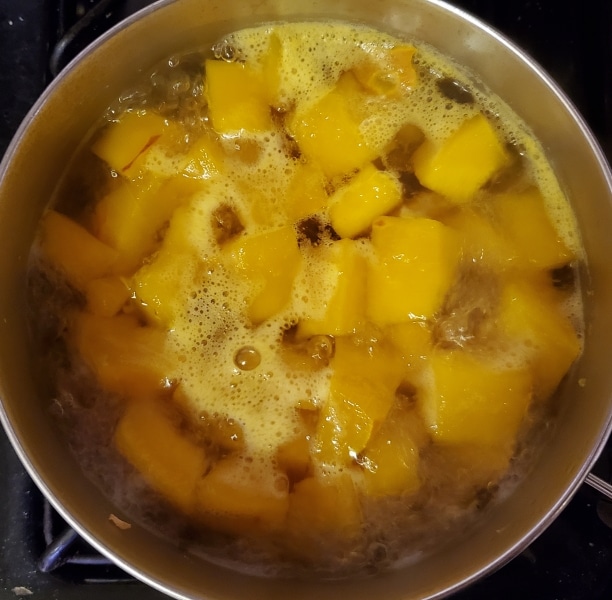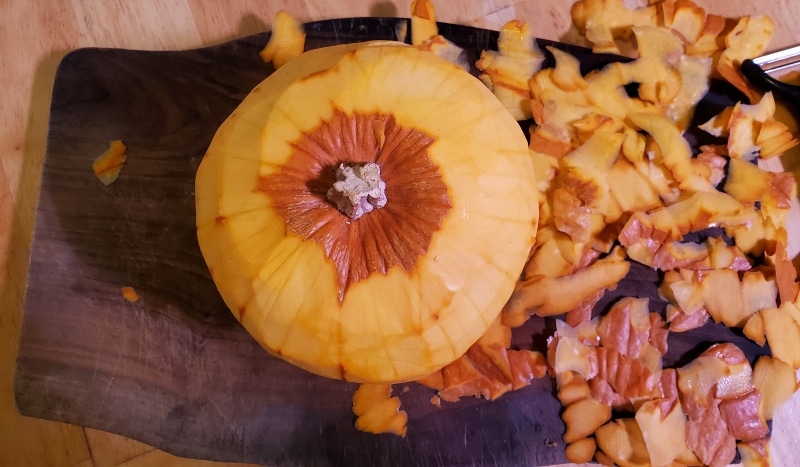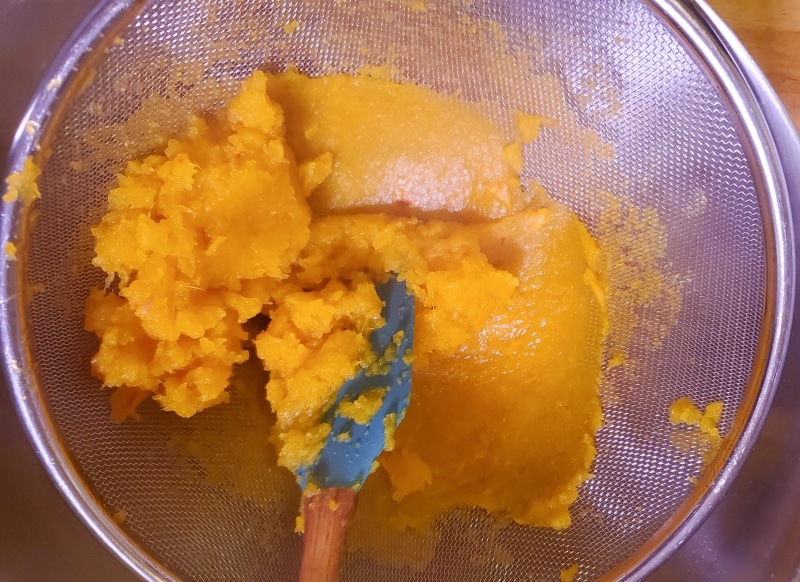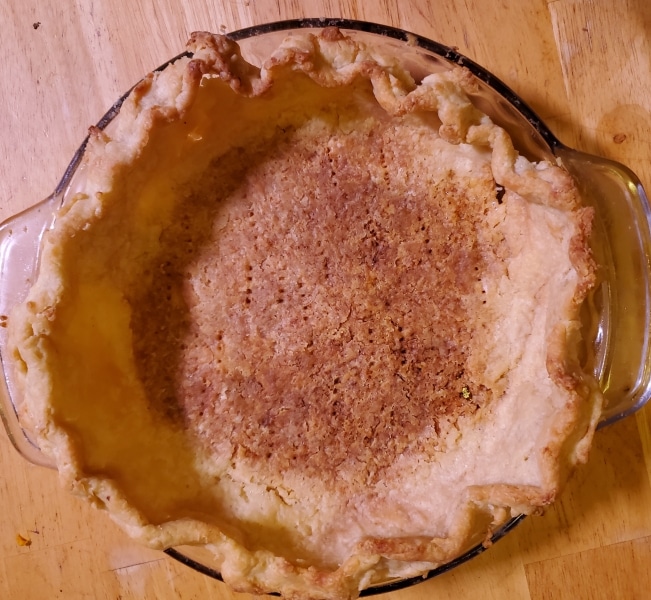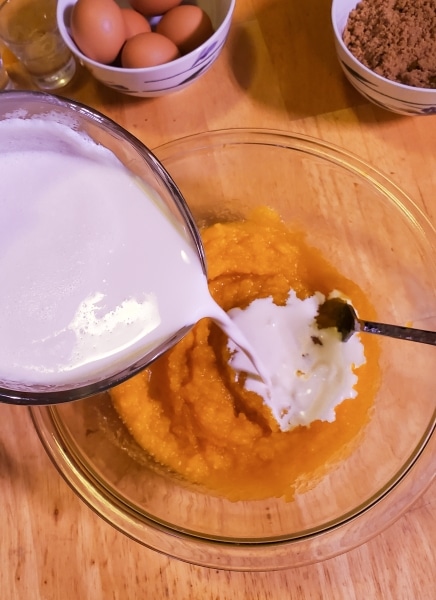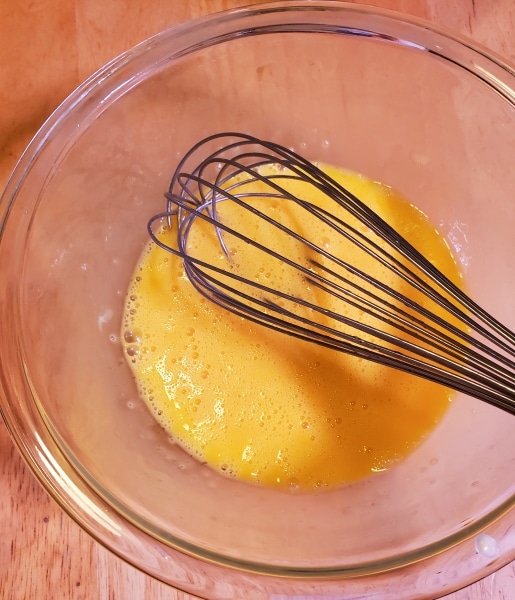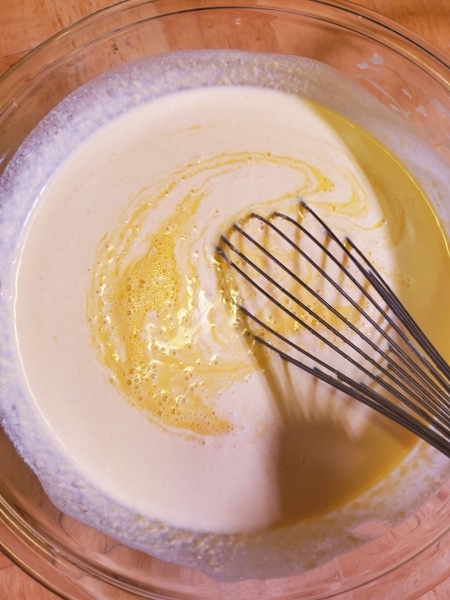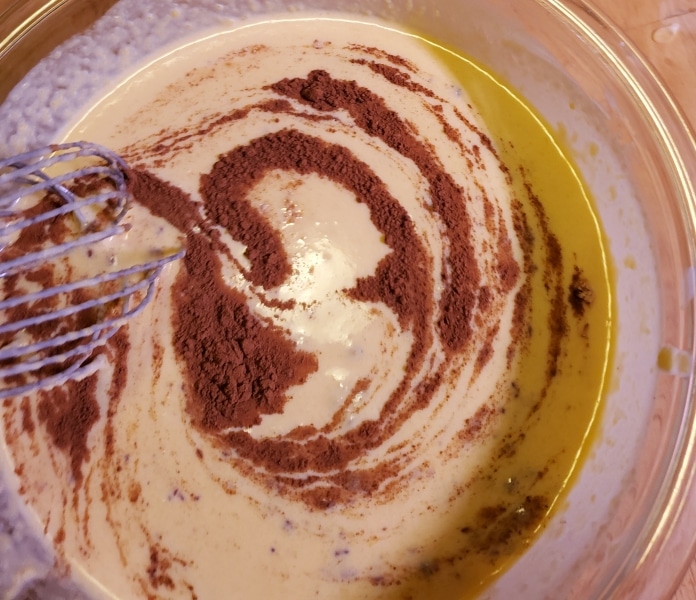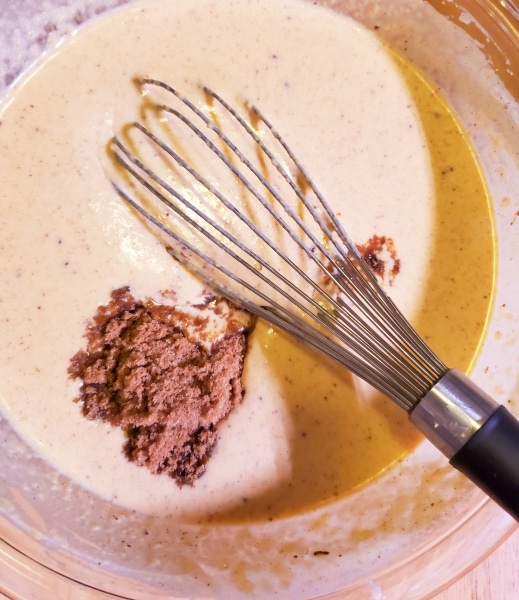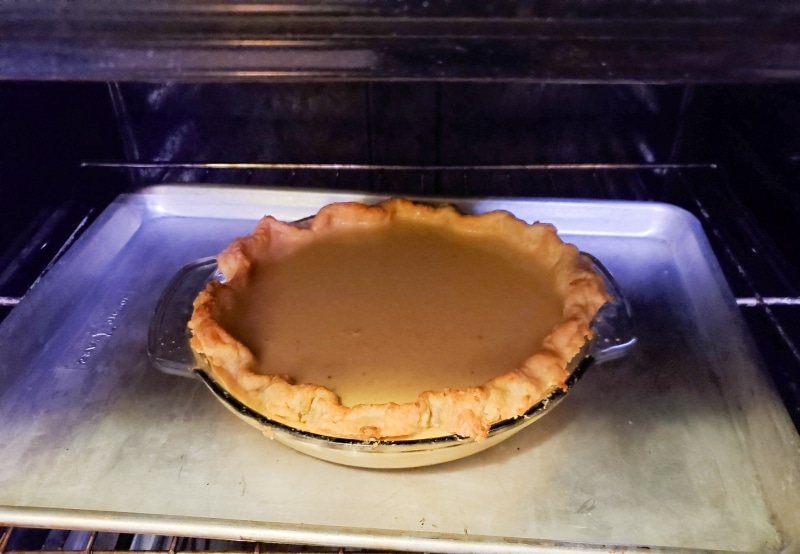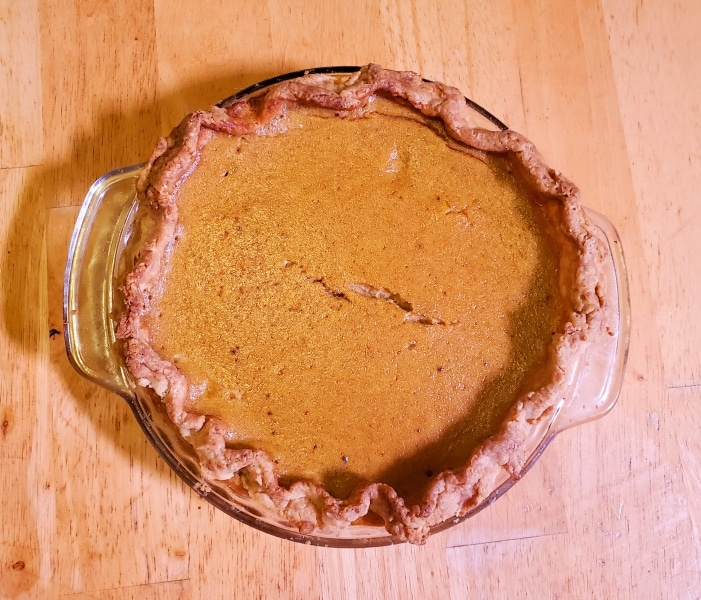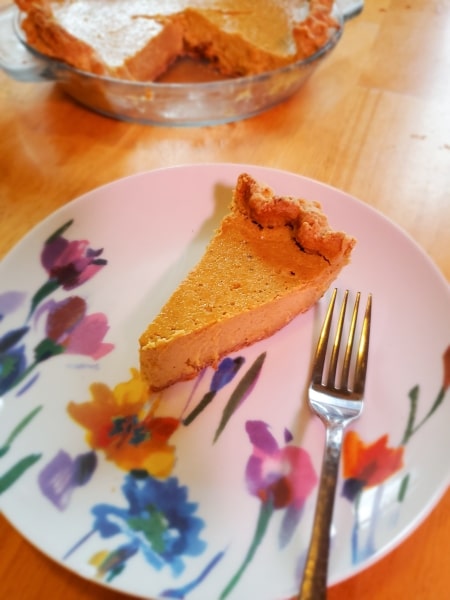Pumpkin Pie In Verse
Katie Maxwell, Visitor Services Coordinator
In Spring 2022, the Library Company of Philadelphia will run a food-centered seminar, Philadelphia at the Table: Treasures of the Larder Invaded with author and food historian Dr. William Woys Weaver. Be sure to join us as we tackle 19th-century menus, innovations in food and food advertising, the culinary offerings at the 1876 national centennial, and more. Stay tuned for delicious details.
As part of my preparation for this upcoming seminar, I am attempting to recreate a few dishes from our research. Today, I’m tackling the pumpkin pie on page 125 of the 1847 edition of The Caterer and Household Magazine by J.W. Parkinson, a well-known chef and restaurant owner.
Take winter pumpkin, boil and strain it through
A sieve or colander, and add hereto,
For every pint of pumpkin, milk the same,
Or what is better still, a pint of cream.
Beat five eggs well; add cinnamon for spice
A dash of ginger also makes it nice.
Then sweeten with sugar–brown is best–
Some use molasses, but ‘twont please a guest.
Prepare a crust in a deep plate or dish,
Bake well–’twill prove to be all you can wish.
Believe it or not, this is not the first recipe in verse that I’ve found; it isn’t even the only pumpkin pie recipe in verse that I’ve found. Anyway, I better rustle up these ingredients:
1 pumpkin (I imagine this pumpkin will yield a minimum of one pint when boiled and strained.)
1 pint milk or cream
5 eggs (the egg size isn’t specified so I’m sticking to large eggs)
Dash of ginger
Cinnamon (I’m guessing the amount, maybe a teaspoon)
*Brown sugar (maybe the each baker chooses their own amount)
Prepared crust
Now here’s a question: by “prepared,” what does the poet mean? This could indicate a rolled out crust which I’ve included in the picture above or possibly a blind-baked crust. After checking several modern pumpkin pie recipes, I’m going to pre-bake the pie crust.
I have learned that you have to weight the unbaked pie crust when blind-baking otherwise it will puff up. I am using designated pie weights, but uncooked rice or dry beans also work.
While the crust bakes, I start the filling.
Take winter pumpkin, boil
While this step is clear, peeling an entire pumpkin was less than fun.
and strain it through
I waited for the chopped pumpkin to get very soft in the boiling water. As you might imagine, boiling pumpkin resulted in very watery pumpkin. I let it just sit in the strainer for a few minutes before forcing it through.
At this time, my crust is also done baking:
maybe slightly overdone.
For every pint of pumpkin, milk the same,
Or what is better still, a pint of cream.
After measuring out one pint of pumpkin, I decide to take the poet’s advice and go with heavy cream.
Beat five eggs well;
But what does “well” mean: until they’re homogenous, light and airy? I’ve decided to split the difference and beat them until they’re completely homogenous and just starting to foam.
After I whisk the eggs in to the cream, it’s time to
add cinnamon for spice
A dash of ginger also makes it nice.
Then sweeten with sugar–brown is best–
Since there’s no specific amount of sugar called for, I’ve been adding brown sugar gradually until it tasted sweet enough: just over ⅔ cup.
Some use molasses, but ‘twont please a guest.
That seems like a matter of opinion, but in this instance I’ll defer to the poet’s judgement.
Prepare a crust in a deep plate or dish,
Bake well–’twill prove to be all you can wish.
Bake well? I guess it’s time for more guesswork. I’ve preheated the oven to 350°F, and now I just need to watch it like a hawk.
A bit under an hour later:
I thought I should remove the pie when the edges were set and the center slightly jiggly, but now that it is out of the oven and has begun to cool, the center cracked a bit, often a sign of over-baking. Oh well. Now I must impatiently wait for the pie to cool completely.
A number of hours later, it’s finally time to eat pie.
It’s really good; I can whole-heartedly endorse this pie. While the first forkful doesn’t look as smooth as typical modern pumpkin pie, it still tastes smooth. It has a rich, creamy consistency and while spiced, doesn’t hit you over the head with that pumpkin spice flavor, probably because it doesn’t have any nutmeg. I’ve said it before and I’ll say it again, pumpkin spice is mostly nutmeg. Now go forth and make pie!
*I’ve realized too late that modern brown sugar is likely not similar to the brown sugar that was used at the time, but it is too late now; I’ve already made the pie.

